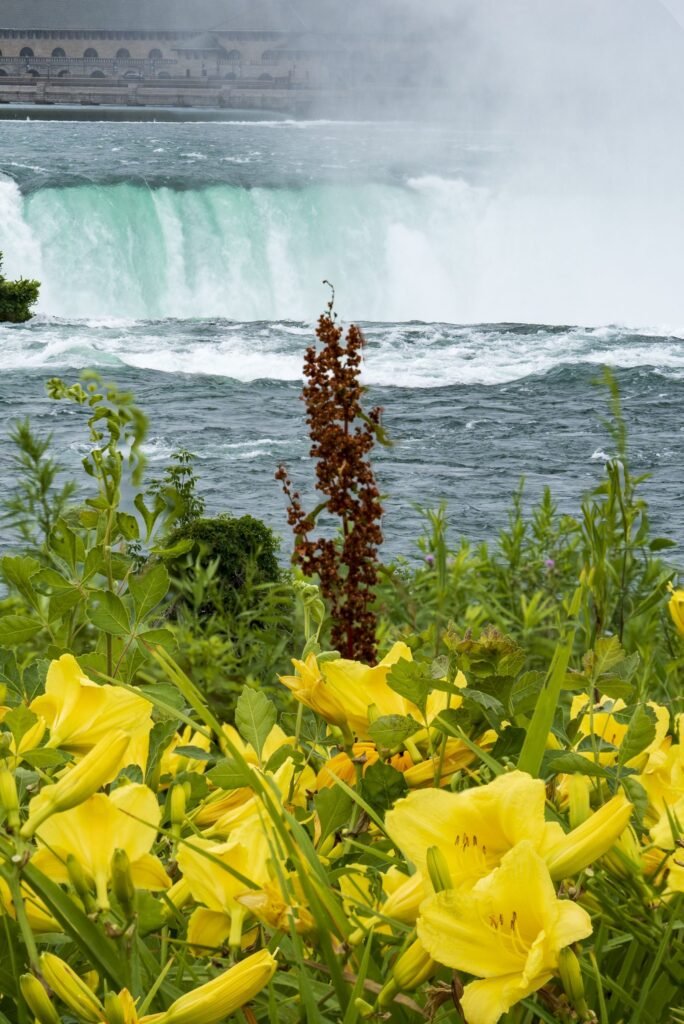Focus Stacking
Allows you to keep almost all areas of a scene in focus, producing amazing images.
The Disparity Between Human Vision and the Necessity of Focus Stacking:
When our eyes behold a picturesque vista, be it the majestic mountains in the distant horizon or a solitary tree standing in the foreground, the world unfurls before us in stunning detail, with every element appearing impeccably sharp. This remarkable feat is made possible by the innate ability of our eyes to continuously adjust their focus, seamlessly transitioning from the nearby to the far-off as we absorb the splendor of the scene.
However, the realm of photography operates by different rules. A camera’s lens, unlike our adaptable eyes, fixates its focus on a specific object within the frame. Consequently, depending on the proximity of this chosen subject to the overall composition, other elements in the scene may find themselves relegated to the blurry margins of the captured image. While certain techniques can be employed to mitigate the extent of this focal disparity, there are situations where such adjustments prove either impossible or undesirable.
Enter the art of “Focus Stacking“. This ingenious process empowers photographers to retain the pristine clarity of nearly every facet within a scene, giving rise to breathtaking imagery that mirrors the visual richness experienced in person. In the realm of landscape photography, where panoramic vistas often demand meticulous attention to detail, focus stacking emerges as an invaluable tool, frequently employed to ensure that every element within the frame stands out in remarkable sharpness and splendor.
Unlocking the Power of Focus Stacking
In the realm of photography, the power of focus stacking unveils its intricacies. At its core, this technique is elegantly straightforward: one captures a series of photographs of a captivating scene, each with a distinct focal point. Then, like a masterful painter, these images are artfully woven together, blending the crisply in-focus segments from each frame into a singular, harmonious masterpiece.
While the concept is deceptively simple, the execution is a testament to both patience and precision. Many imaging software tools possess the capability to orchestrate this dance of focus, seamlessly merging images to create a final composition that shines with clarity. These digital artisans often work wonders in a variety of photographic scenarios.
However, when the canvas stretches across the vast expanse of a breathtaking landscape, the process becomes a symphony of meticulous artistry. It’s here, amidst the sweeping vistas and intricate details of nature, that focus stacking reveals its true complexity. In some instances, the creation of a focus-stacked image is a swift endeavor, a flourish of the digital brush that takes mere minutes. Yet, when faced with intricate scenes or the pursuit of perfection, the process can extend into hours of dedicated craftsmanship.
Now, let us delve into the realms of possibility with a glimpse at some focus stack examples, where the very fabric of reality is rewoven to grant us a view beyond the ordinary.
Example #1:
Our first example presents a captivating cut-away from Cummins Falls. This exquisite composition employs the elegance of a two-image focus stack. Allow your gaze to traverse the contrasting frames. In the initial tableau, the rugged rocks in the foreground stand veiled in a soft blur, while the resplendent waterfall in the background emerges in crystal-clear focus. In the following frame, the foreground takes center stage, its jagged contours sharp and vivid, while the backdrop, adorned with both the waterfall’s splendor and the presence of people, recedes into a gentle blur.
Now, imagine the alchemy that transpires when these two images harmonize. As if by the stroke of a photographic sorcerer’s wand, the areas of sharp focus converge, culminating in the third image—a visual symphony where the rugged rocks in the foreground and the resplendent waterfall in the distant backdrop coalesce in a harmonious union, each element rendered in exquisite detail, all at once.
Image #1 Used for Focus Stack

Image #2 Used for Focus Stack

Final Focus-Stacked Image
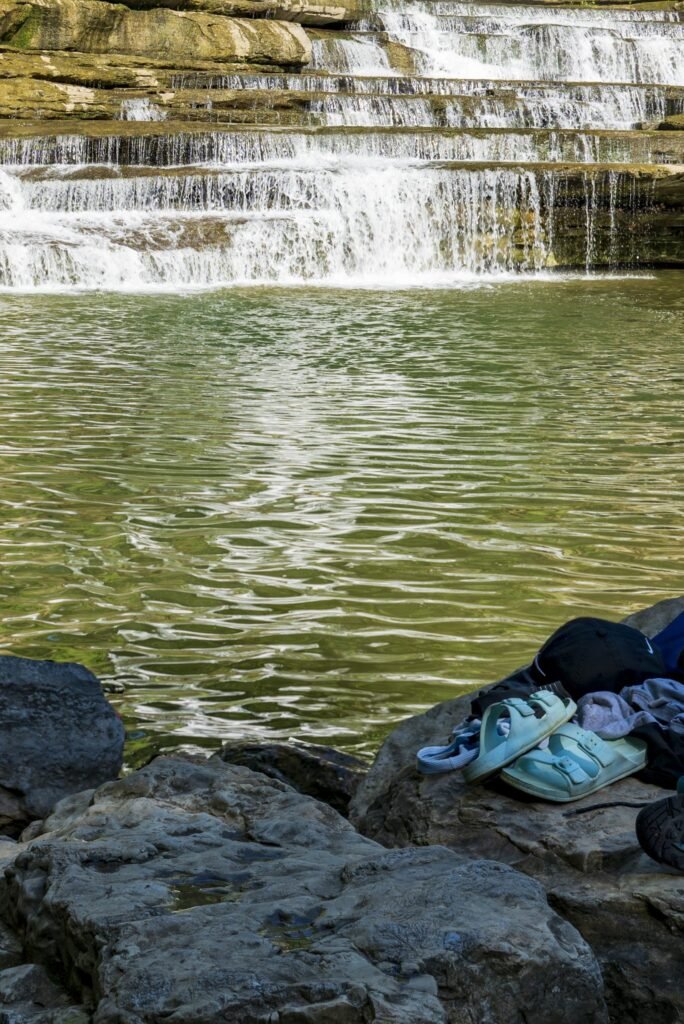
Example #2
Let’s delve into Example #2, a scenario that ushers in greater complexity for focus stacking. Here, we offer you a slice of an image captured at the awe-inspiring Niagara Falls. When we embarked on creating this composition, we were keenly aware that the finished product might not meet our sunlit expectations. Nonetheless, it serves as an exemplary case of a multifaceted focus stack.
In this intricate foray into focus stacking, two new challenges emerge:
- The sway of nature, as embodied by these delicate plants, becomes our initial adversary. Nature’s gentle breezes may have rendered the sequential images nearly identical to the naked eye, yet upon closer examination, we discern subtle displacements—flowers, branches, and stems shifting ever so slightly. This introduces a formidable complexity to the focus stack.
- The camera’s proximity to the foreground adds another layer of intricacy. In order to encapsulate the essence of the scene, it was necessary to capture not one, but three distinct photographs. The first frame bestows focus upon the resplendent lilies, the second extends its attention to the flora just beyond, while the third beckons the distant foliage and the cascading waterfall into the spotlight.
As we embarked on the final iteration of this digital masterpiece, Photoshop emerged as our trusted accomplice, orchestrating its formidable toolkit to splendid effect. While the result merits commendation, it is not without its imperfections. Since this particular image would not make it on our cherished ‘A’ list, we’ve chosen not to devote further hours to its refinement. A discerning eye might discern a slight blur amidst the leaves of the reddish plant at the heart of the composition—a blemish that, in the realm of ‘A’ list contenders, would warrant meticulous hours of correction.
But the point: Focus stacking can be sometimes quick and easy, or sometimes time consuming.
Images Used (3) for Focus Stack
Image #1 for Focus Stack
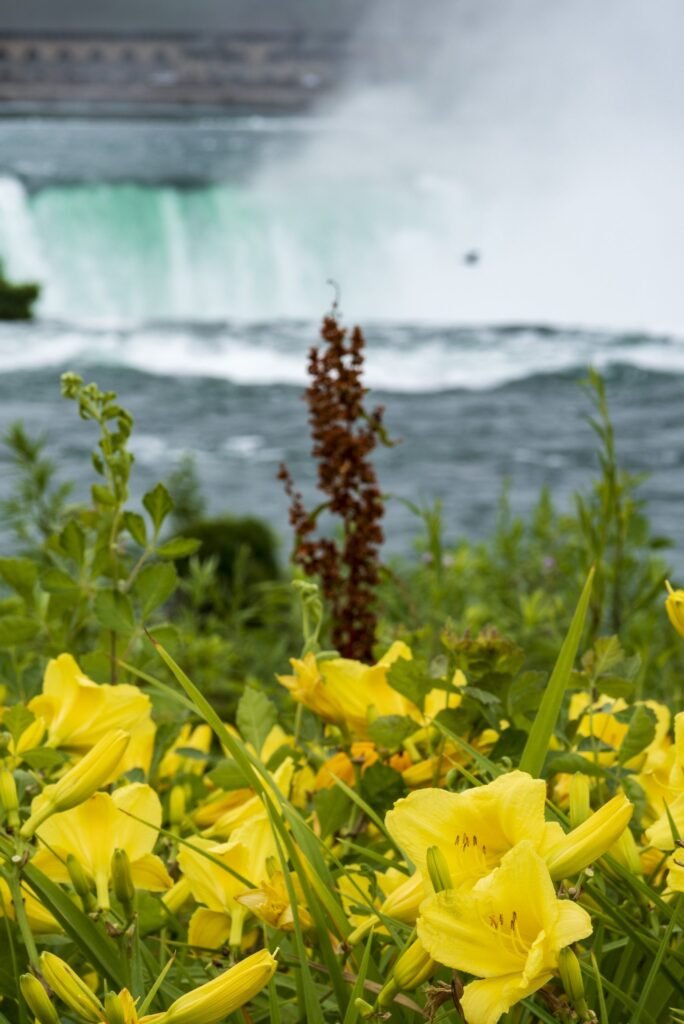
Image #2 for Focus Stack
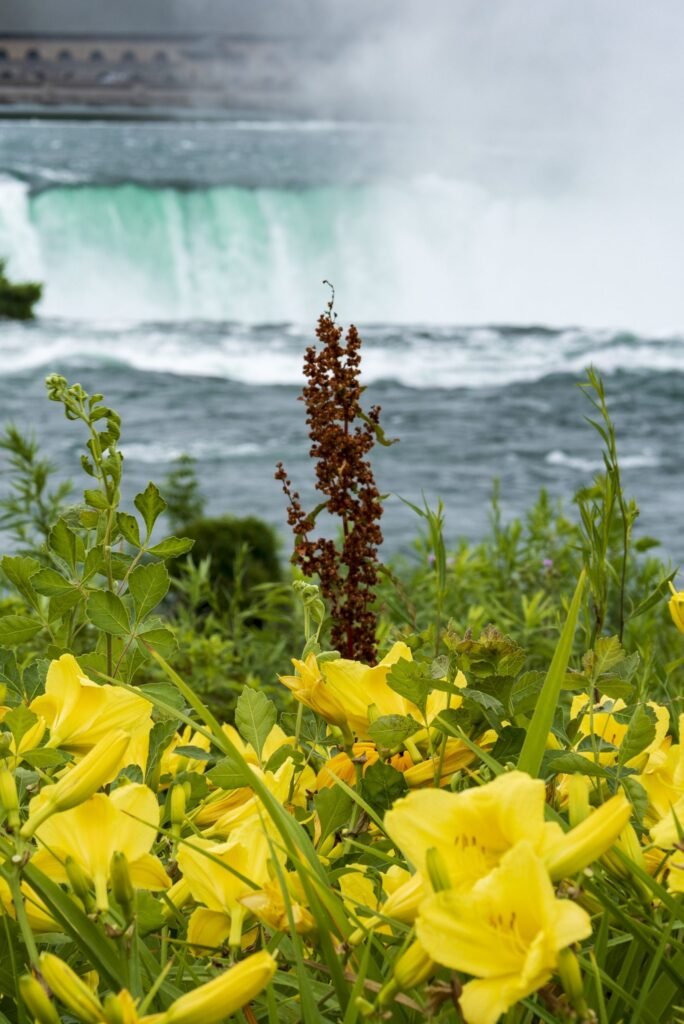
Image #3 for Focus Stack
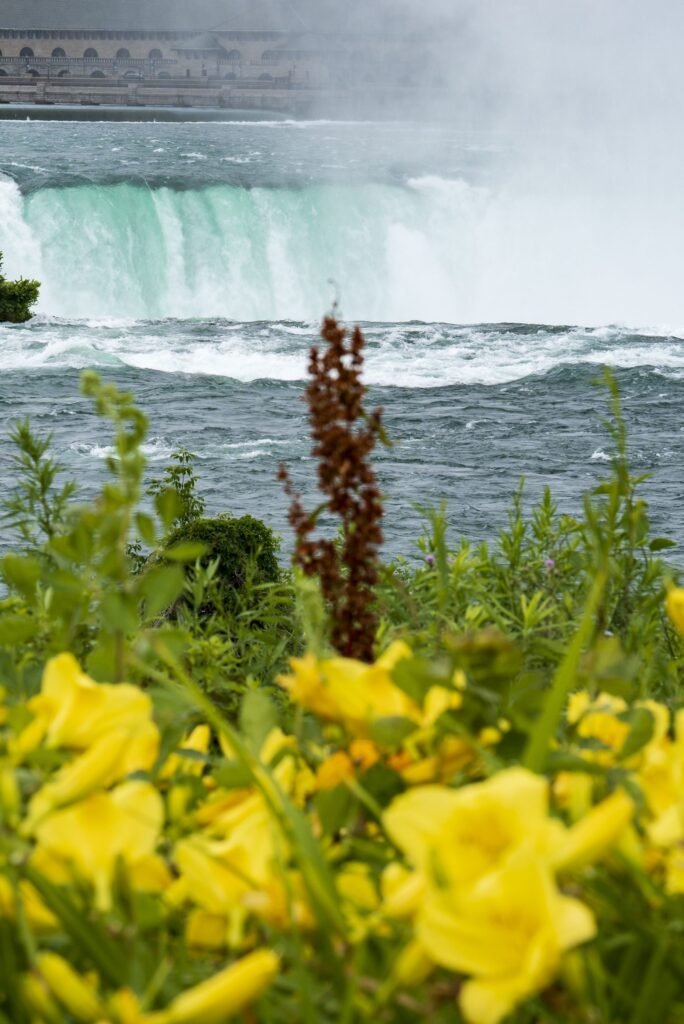
Final Focus-Stacked Image
